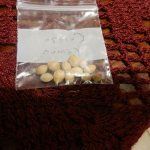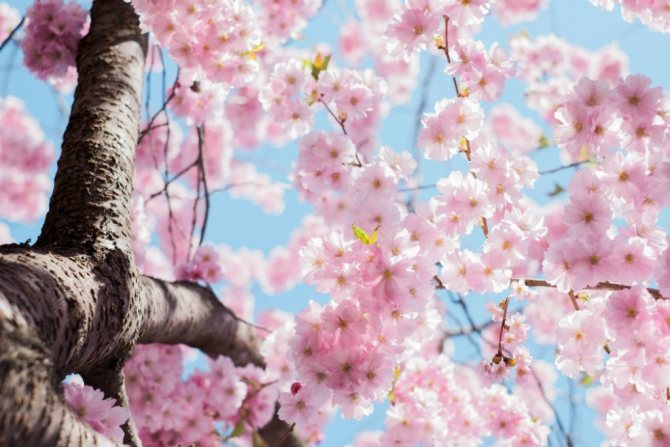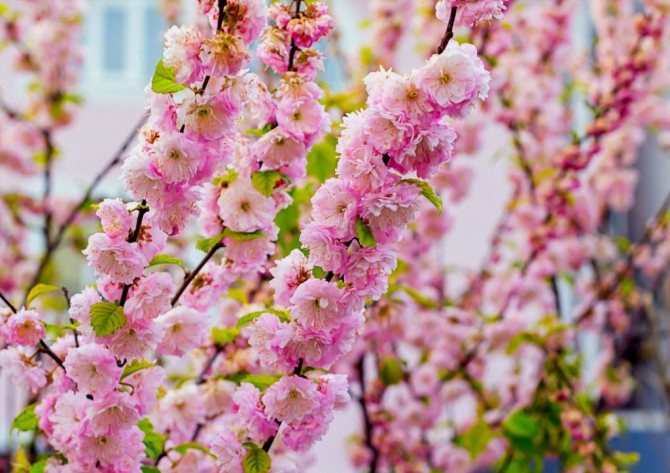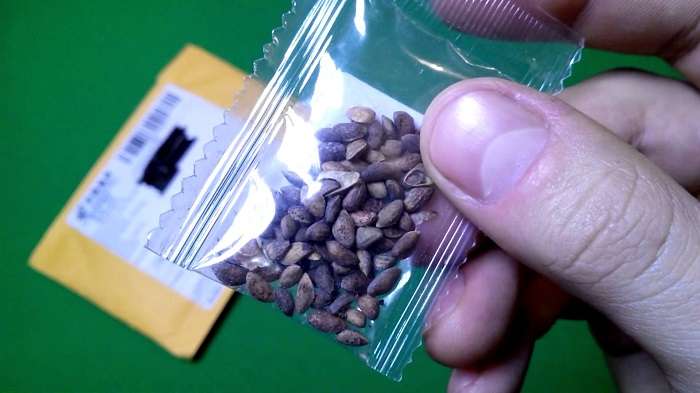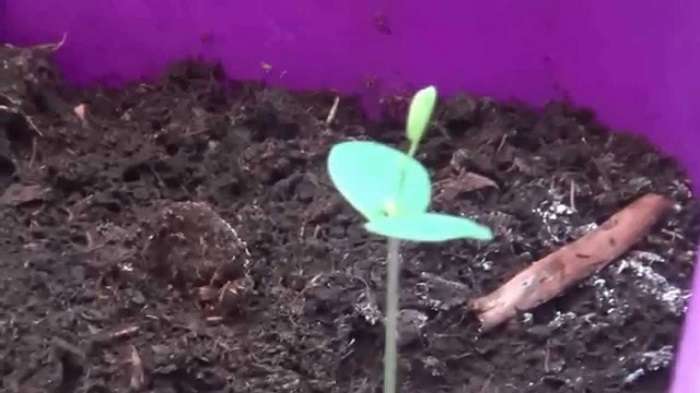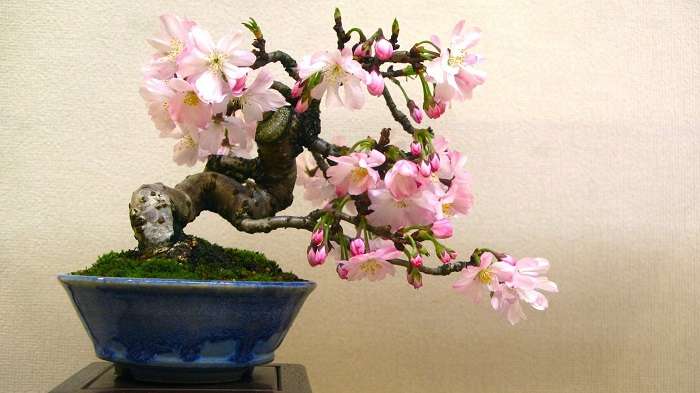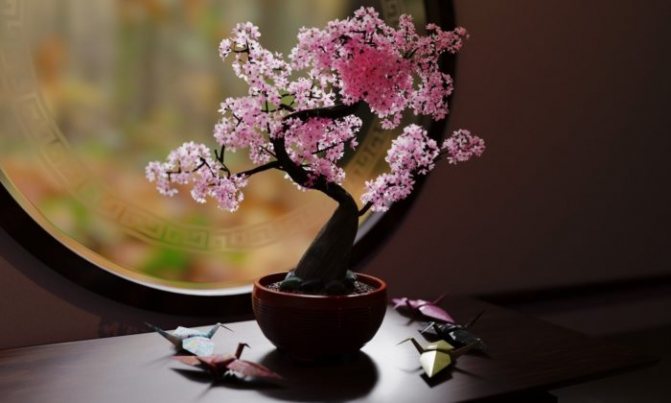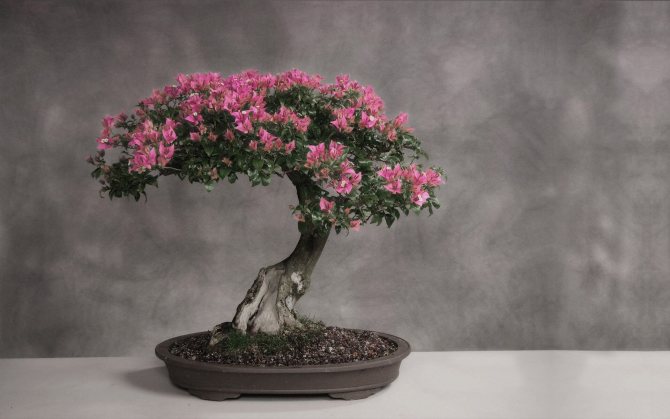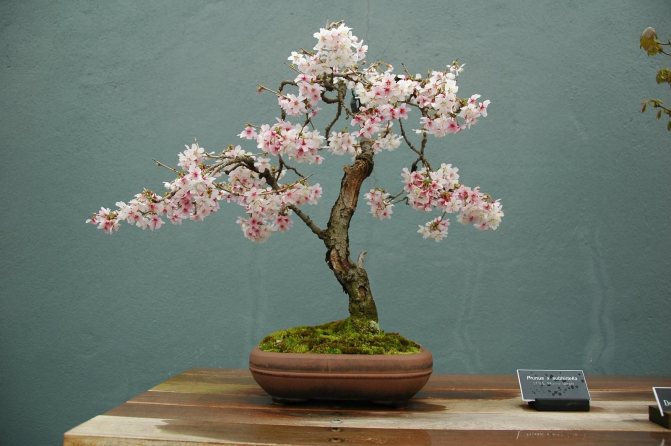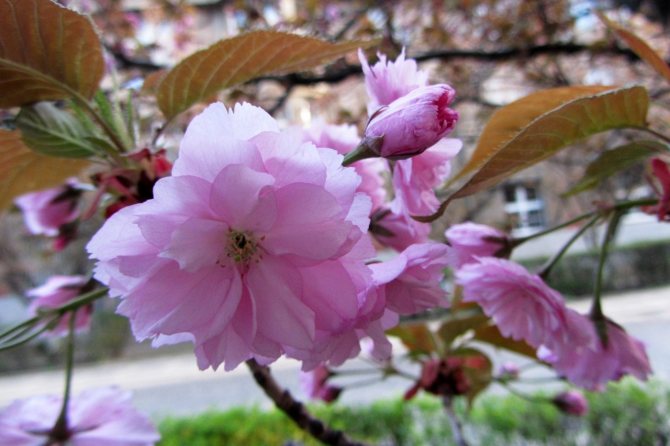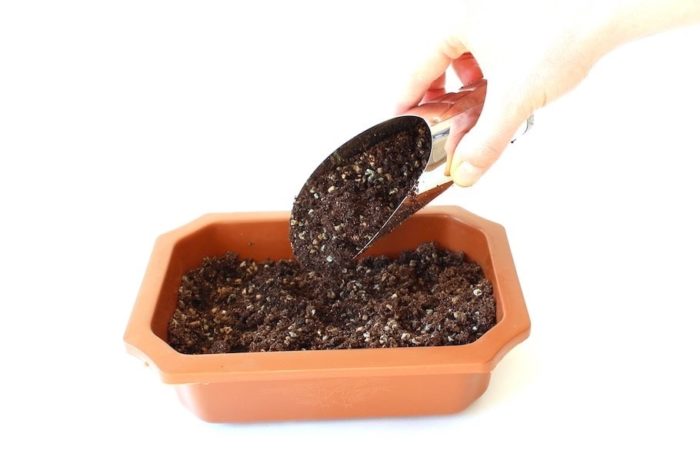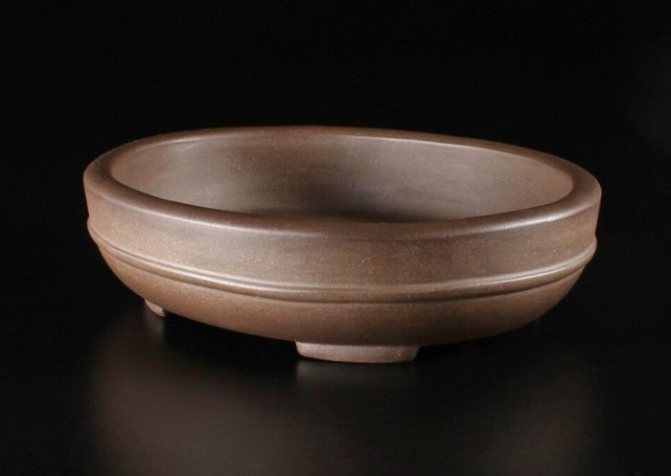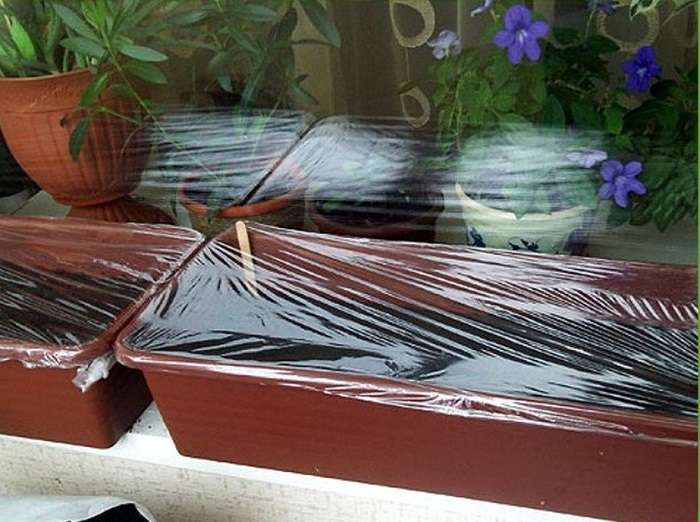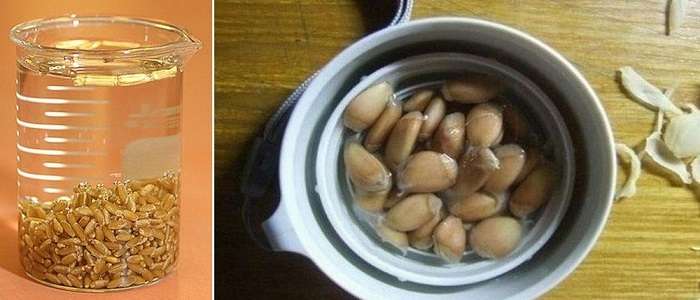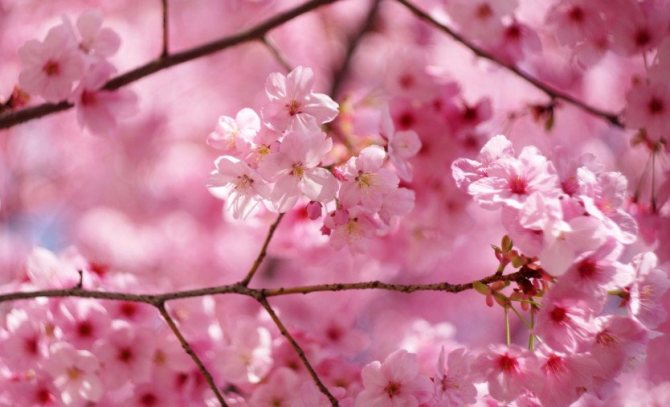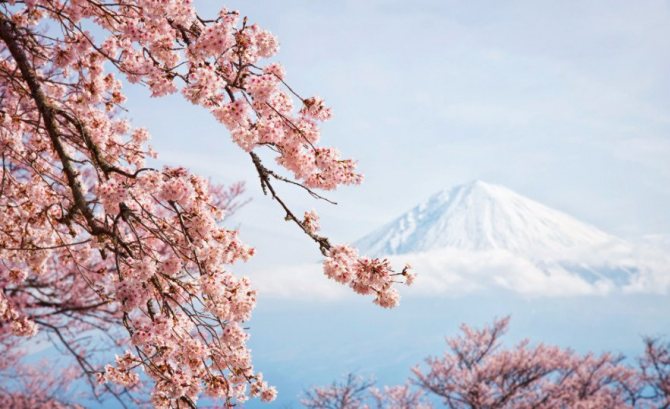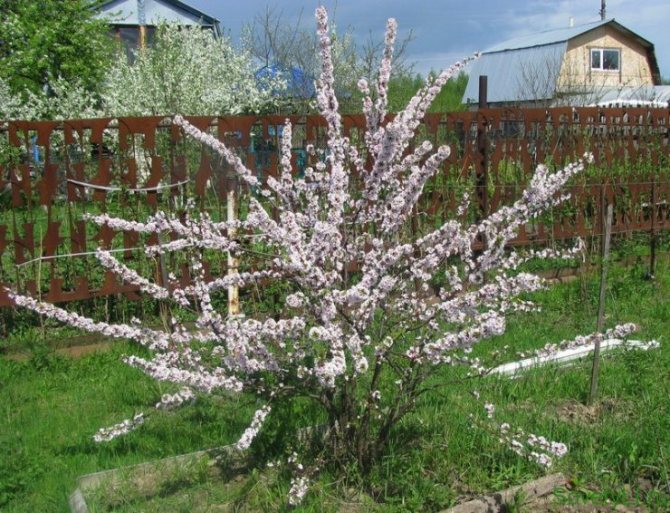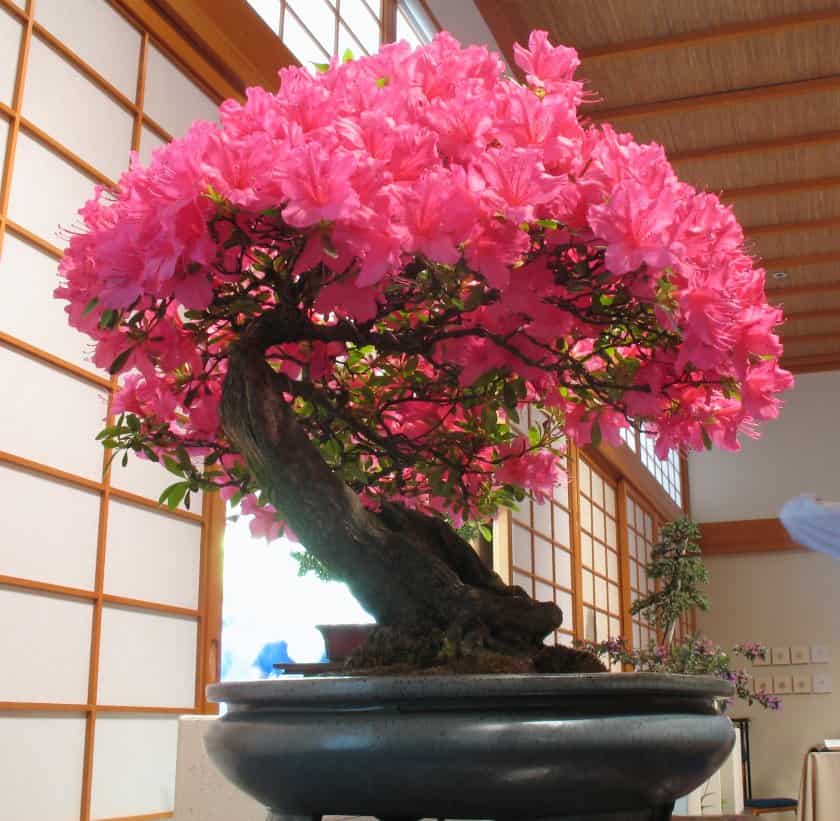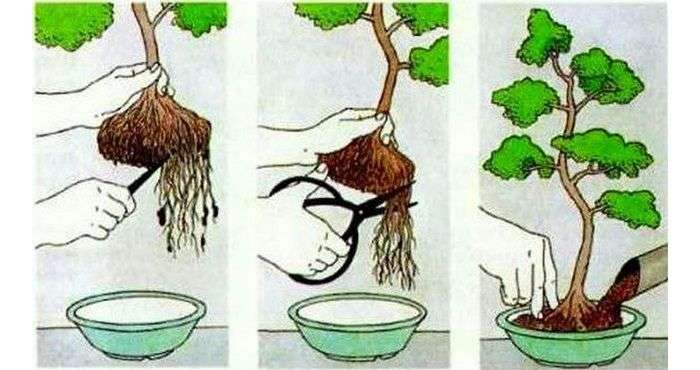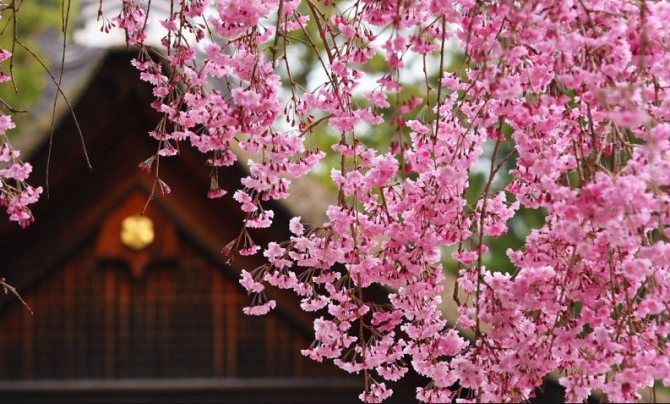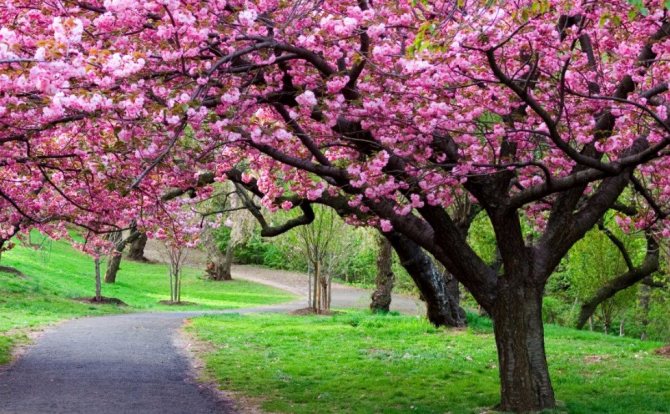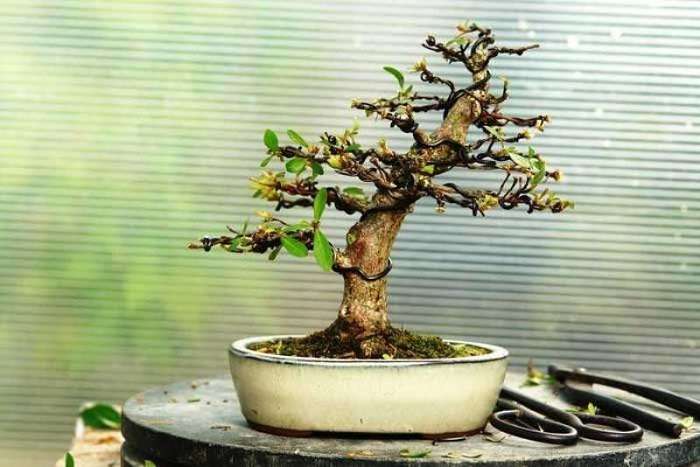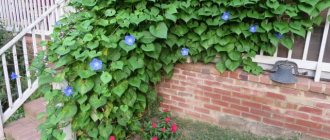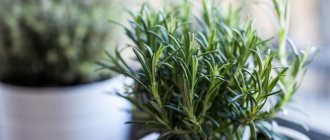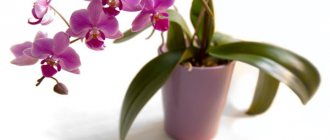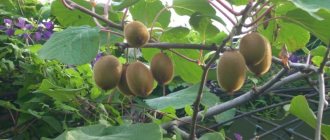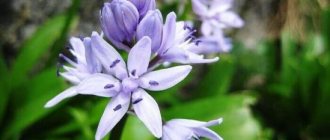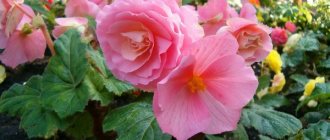Sakura from seeds: preparation for planting
The basis for growing any crop is high-quality seed. Sakura seeds can be purchased at specialized retail outlets. Seed germination is poor - no more than 20%. On this score, gardeners advise:
- buy more stuff;
- use products from different manufacturers to determine who has the best quality.
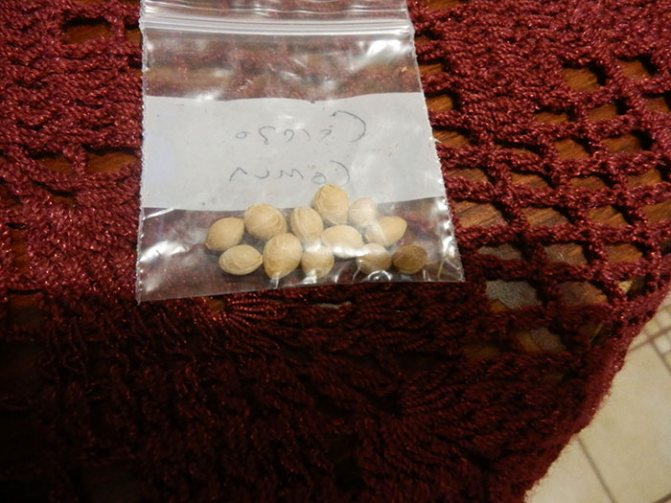
Sakura seeds
The process of planting a tree requires the following actions:
- Stratify. For seeds, simulate natural winter weather. To do this, put them in a bag of wet sand and place them in the warmest compartment of the refrigerator. At a temperature of + 4 ... + 5 ° C, the material should be stored for at least 2-3 months.
- A couple of days before planting, soak the seeds for a day in lukewarm water.
- To help the seedlings break through the seed coat, mechanically scratch or puncture the outer layer.
Sakura seeds are planted in coarse sand that has been calcined or otherwise disinfected. Such a substrate is most suitable for germinating seeds and, in addition, will protect the culture from diseases. An alternative to sand is moss or vermiculite. Use a wide, shallow container as a pot. Drainage holes are required.
Which capacity is better to choose


To optimize cultivation, ensure the correct size and parameters of the containers in which the seeds will grow. The container used must be wide enough for the freedom of growth and development of the plant.
The depth should be about 5 centimeters - so the root system at the initial stage of growth will have enough space for active growth. Be sure to make sure that the container has drainage holes, because normal water circulation allows the plant to saturate the elements necessary for development.
How to plant and dive sakura at home
Proper planting is half the success of the future sakura cultivation:
- treat the seeds with a fungicide;
- moisten the substrate;
- deepen the seeds by half a centimeter into the grooves made (there should be at least 3 cm between them);
- cover the planting with a thin layer of fine-grained sand;
- cover the pot with foil or glass;
- leave at a temperature of + 5 ... 10 ° C.
Attention! Gardeners recommend planting seeds in the spring or at the turn of August and September.
Seedlings should appear in 1.5-2 weeks. Until this moment, care consists in maintaining the top layer of the soil in a moist state, providing a large amount of light, and gradually raising the temperature to room level. Shoots appeared - dive them into separate pots. The distance between the planted seedlings should not be more than 10 cm if you move them to a new common container.
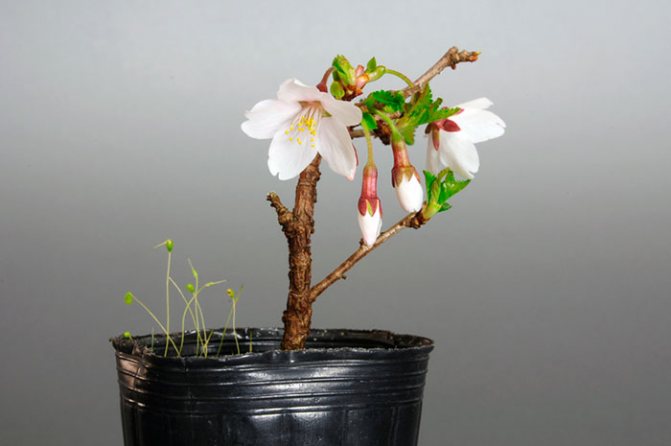

Sakura blossom
A pick is an important condition for the normal development of sakura. Multiple transplants strengthen the root system. Sakura seedlings are not touched only in the cold season. They are placed in a cool, shaded room until spring. The key point in picking up grown seedlings is the selection of new pots. The gardener has two options:
- leave the culture to grow in a cramped container and form a bonsai version of the tree;
- move it to deeper and wider pots and prepare the tree for the garden.
Departure Point: Cherry Pit
A luxurious overseas guest is capricious and whimsical in cultivation, but, nevertheless, is increasingly found in our gardens, parks, city squares.
As befits a cherry, a Japanese beauty grows from a cherry fruit seed. The long journey of turning a small cherry seed into a mature tree is not the easiest, but the end result is worth the effort and time. It starts, of course, with the purchase of planting material.
If there is an adult fruiting Japanese cherry in the field of vision (from friends or in your own household), you can stock up on seeds from it by collecting ripe fruits and freeing the seeds from the shell. Another option is to purchase ready-made seeds from an online store.


Sakura seeds
The species diversity of cherry blossoms is quite large, while not all varieties take root in the Russian climate. Our winters tolerate such sakura varieties without any problems:
- Kikushidare - 3-5 meter double-flowered tree
- Kwanzan - with large purple flowers
- Spire and Shidare Yoshino are specially bred frost-resistant varieties that can withstand temperatures down to -30 degrees
- Halle Olivetti - also frost-resistant species
Thanks to the selection and breeding of new varieties, today there are frequent cases of successful cultivation of sakura even in Siberia.
Before planting in the soil, the seeds should be soaked in warm (30 degrees) water for a day. It would be nice to add fungicides or growth stimulants to the liquid - additional protection for capricious fruits will not be superfluous. The outer shell of cherry seeds is very hard, therefore, to facilitate germination, you need to carefully prick or cut the shell, but in no case damage the inner part.
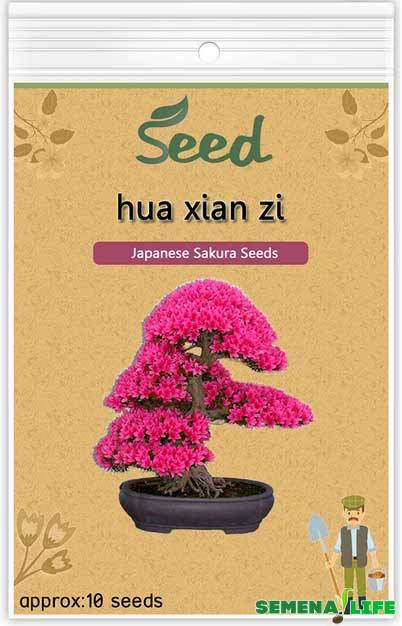

On a note! Sakura seeds do not germinate well, so they need to be planted "with a margin", taking into account potential losses (even only 20 percent germination of the material is considered the norm).
After soaking for a day, the bones are ready for further procedures.
Planting and picking seedlings
Sakura loves slightly acidic loose soils, the ideal option is coarse sand. You can slightly dilute it with compost, wood ash. The soil, in order to avoid seedling diseases, must be calcined.
The landing tank should be shallow, always with drainage holes. The seeds are buried in the sand by about a centimeter, with a three-centimeter distance between them. On top, you can pour a half-centimeter layer of fine sand, and cover the container with foil.
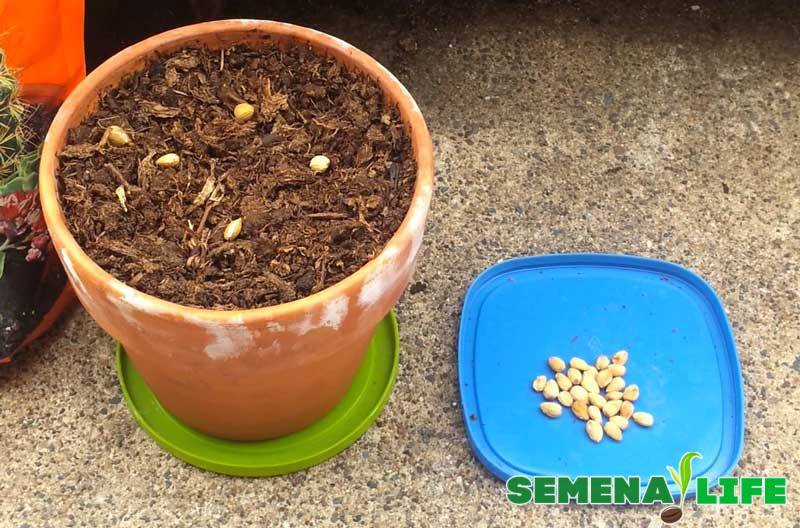

The answer to your question: the best time to plant seedlings is spring (after the last frost) and late summer - early autumn.
Then the planted seeds undergo cold stratification: the temperature should be 2-4 degrees, the period should be two months. The bottom shelf of the refrigerator is considered the best option. Two months later, a box with seeds must be taken out, and then the seedlings must be germinated in room conditions. It is necessary to monitor the constant moisture content of the soil and a sufficient amount of indirect sunlight. Seedlings usually appear in one and a half to two weeks. With the emergence of seedlings, you can slightly raise the film so that more fresh air comes in.
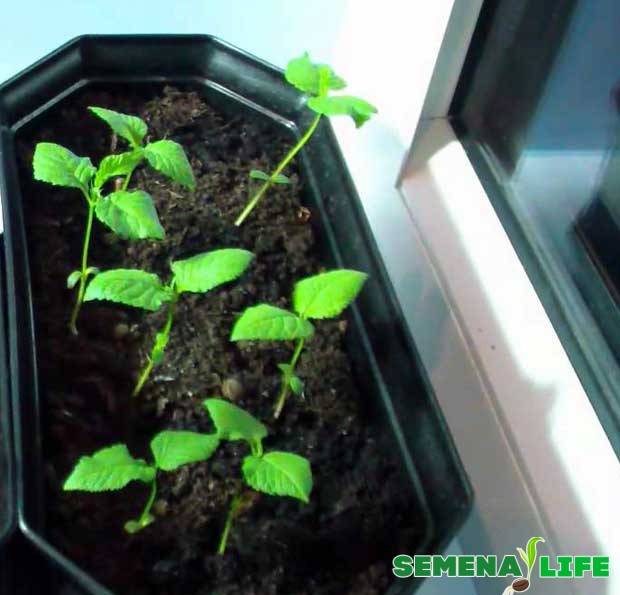

Sprouted seedlings are immediately planted in separate pots or in a larger common dish, leaving a 10-centimeter distance between the shoots. The pick "trains" the root system, so the seedlings are transplanted annually - in spring and autumn, excluding the winter period. With each transplant, plants need to pick up more spacious pots and apply humus to the soil (or feed them with special fertilizers from April to September).
Destination: a place in the garden
Two-year-old seedlings are ready for planting in open ground. To do this, dig a planting hole with a diameter of about 35-40 cm, a depth of 40 cm.Drainage is poured onto the bottom (pebbles, crushed stone, etc.), the ground from the pit is carefully separated from stones, roots, and the like, and is poured onto the drainage to half the height. The seedling itself is planted in a mixture of humus, compost, sand and field soil.
Planting rules are standard for all tree seedlings: trample the ground, water, fill up the top layer, make a watering ditch around the trunk. The thin stem must be attached to the retaining post.
The planted trees still require careful maintenance: they need to be watered, avoiding overflow, weeded, loosened the top soil layer, wrap up for the winter. In the spring, when flowers and leaves are formed, nitrogen-potassium feeding is required.
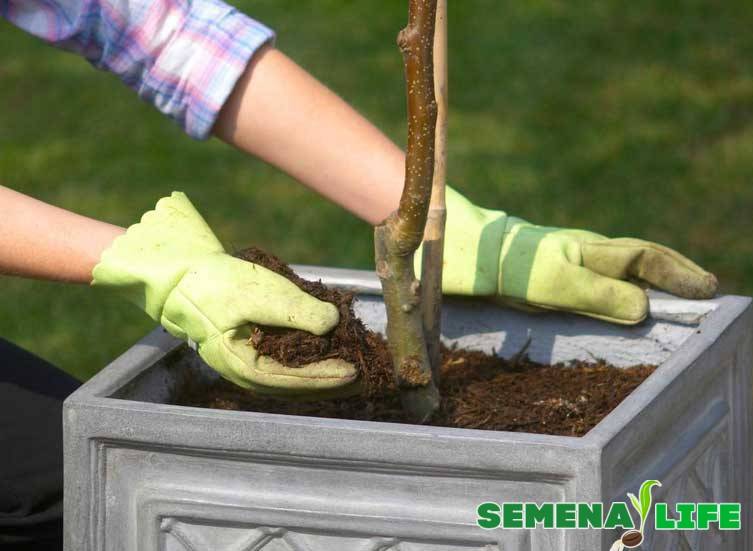

Just 3-4 years after planting seeds in pots, young sakura in the garden will already delight with annual flowering, continuing to grow. An adult tree blooms with bright and fragrant flowers for about a week every spring, in autumn the sakura is also picturesque - the foliage acquires a yellow-purple hue.
semena.life
Features of tree care
Sakura varieties have many differences in cultivation techniques. To grow sakura bonsai, the roots are shortened every season, and horizontal cuts are made on the bark, right on the trunk. For a garden tree, these methods are irrelevant - in the room you form a seedling, and then transplant it into open ground.
The rules for caring for a particular species are different. A common feature is that trees are moody and require daily attention. The tree needs soil enriched with humus, potassium, nitrogen. During the season, sakura is watered with half a glass a day, in winter - less often. Good lighting and the absence of drafts are important for the plant.
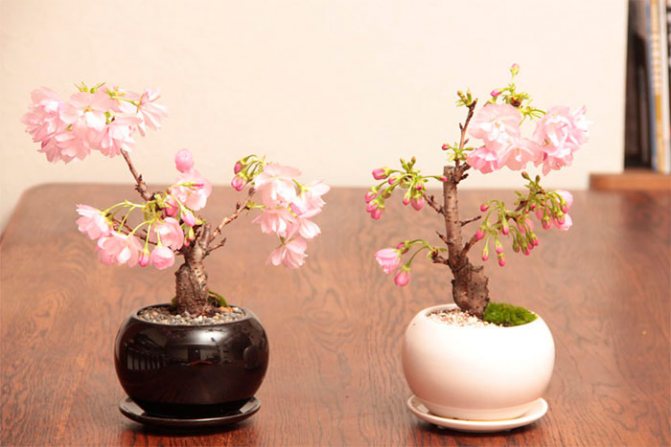

Sakura bonsai
The secret of the beauty of sakura is not only in the large and abundant flowers, but also in the aristocratic crown. It can be formed starting at the age of 2-3 years of the plant. In natural and miniature versions, the branches are ordered according to the same pattern. The crown can mean a straight trunk, a bend in the spirit of the age-old Japanese cherry blossoms, or widely spread branches.
Advice. To form a wide crown, trim the main shoot when you think it is tall enough. You can also trim side shoots to correct their direction.
Description
To grow sakura at home probably dreamed, if not everyone, then every second gardener, because this beautiful tree is so pleasing to the eye with its delicate flowering. In China and Japan, as well as in most Asian countries, this cherry variety is much more common than in Russia, and the Asians admire the tree no more than the Russians admire the oak tree. Nevertheless, even in more severe climatic conditions (in the Moscow region, St. Petersburg and even in Siberia) this beautiful plant can be grown. To find out how to do this correctly, we recommend taking note of the tips of our article.
How to properly prune bonsai sakura
To grow a miniature culture, experts use various tricks and techniques. The task is to make even a young tree look like a hundred-year-old tree. For this:
- Expose some of the roots by removing a small layer at the base of the trunk. He must be fat. To do this, regularly remove all vertically growing shoots.
- The barrel should not be too long. Cut off a portion of the root at its base. When replanting, deepen the cut into the ground. Over time, new roots will grow on it. Then the tree can be dived again, while removing the old rhizome.
- The most massive branch of the tree will be the bottom one. What kind of escape to leave for its formation - decide based on the compositional idea.
- For a broom-shaped crown, cut vertically growing branches to the maximum. For vertical, on the contrary, protect vertical branches. In this case, only horizontal ones are cut.
All these manipulations are needed by the bonsai tree constantly. Otherwise, it will lose its shape.The gardener's goal is to maximize the decorative effect of sakura. If you adhere to the cultivation technology, provide the plant with a little care and attention every day, then the Japanese guest will delight you with a lush, large and bright color every spring.
Wintering a tree
Wintering cherry bonsai requires the following conditions:
- The introduction of nutrient nitrogen compounds stops at the end of summer. They are replaced with potash and phosphorus fertilizers, which help the plant overwinter.
- Carrying out water-charging irrigation.
- Shelter with special material.
If there is a cool, frost-free place in the country, you should bring the pot with bonsai to such a room.
Bonsai is an interesting art. Kings in their gardens tried to have miniature trees in bowls not only because of their individuality: according to Feng Shui, this is a plant that brings happiness and prosperity, monetary stability and balance in the family. Also read our article "How to Grow Ficus Bonsai".
All about the view
A bit of history. The art of bonsai has perfected the cultivation of indoor miniature plants exactly like those of large trees growing in nature. According to legend, the Chinese emperor wished to see his empire in miniature - with forests, fields, gardens and trees. His gardeners were able to grow dwarf trees to fulfill the will of the monarch.
After some time, the art of bonsai ended up in Japan, where it received its modern name and development. Various types of small trees look like real ones. Throughout their life, trees add only 1–2 cm in growth. At the same time, they require constant care - they must be properly cut, constantly monitor the shape of the crown, pulling the branches with wire, fertilize and water.
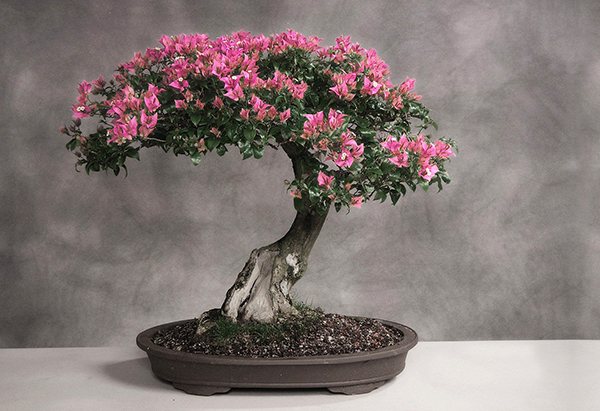

One of the types of dwarf trees is the bonsai cherry (sakura). The tree has a brown trunk with a dense umbrella-shaped crown. It is decorated with white and pink flowers in its natural environment. They grow quite densely - 2–5 flowers in one bunch-inflorescence, their double color strewn all over the crown.
Violet, red, blue and other colors of flowers are artificially bred. Leaves are small in size, green, in autumn they acquire a red or crimson hue. After the flowers, the cherry blossoms have black fruits, but the birds prefer to feed on the flower buds.

